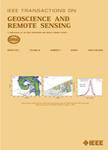版权所有:内蒙古大学图书馆 技术提供:维普资讯• 智图
内蒙古自治区呼和浩特市赛罕区大学西街235号 邮编: 010021

作者机构:Beijing Normal Univ Fac Geog Sci State Key Lab Earth Surface Processes & Resource Beijing 100875 Peoples R China Beijing Normal Univ Inst Remote Sensing Sci & Engn Fac Geog Sci Beijing Engn Res Ctr Global Land Remote Sensing P Beijing 100875 Peoples R China
出 版 物:《IEEE TRANSACTIONS ON GEOSCIENCE AND REMOTE SENSING》 (IEEE Trans Geosci Remote Sens)
年 卷 期:2022年第60卷
页 面:1页
核心收录:
学科分类:0808[工学-电气工程] 1002[医学-临床医学] 08[工学] 0708[理学-地球物理学] 0816[工学-测绘科学与技术]
基 金:Special Project of Science and Technology Basic Resources Survey China Ministry of Science and Technology [2019FY202502]
主 题:Urban areas Indexes Data models Vegetation mapping Sensors Satellite broadcasting Calibration Defense Meteorological Satellite Program (DMSP) Operational Line Scan (OLS) logarithmic model radiance-calibrated (RC) saturation correction stable light
摘 要:Nighttime light (NTL) products have become emerging instruments for studying human activity patterns in various applications, including demarcating urban areas, estimating the residential population, and monitoring the economic livelihood of cities. However, the deployment of such products, particularly the Defense Meteorological Satellite Program (DMSP)/Operational Line Scan (OLS) stable NTL data, is also subject to issues of data quality and methodological biases, including interannual inconsistency, saturation and blooming effect, and, in particular, the saturation problem, posing a challenge for further applications. This study proposed a novel saturation correction method based on regression model and radiance-calibrated NTL data (SARMRC) to correct the saturation effect in annual stable NTL data. The proposed method was applied to mainland China. The results show that SARMRC can effectively recover the light intensity distribution within the saturated areas of the stable NTL data. The corrected images were proven to be more spatially consistent with the reference National Polar-orbiting Partnership (NPP)/Visible Infrared Imaging Radiometer Suite (VIIRS) data and can better reflect the temporal development of cities compared to existing saturation correction methods (e.g., the index-based vegetation adjusted NTL urban index (VANUI) method and the interpolation method). The superior performance of SARMRC can be attributed to: 1) better utilization of both radiance-calibrated and stable NTL products and 2) the employment of training pixel selection and logarithmic model as well as double-year adjustment. The new method is expected to improve the data quality of DMSP/OLS stable NTL data for analyzing both local and regional socioeconomic activities.